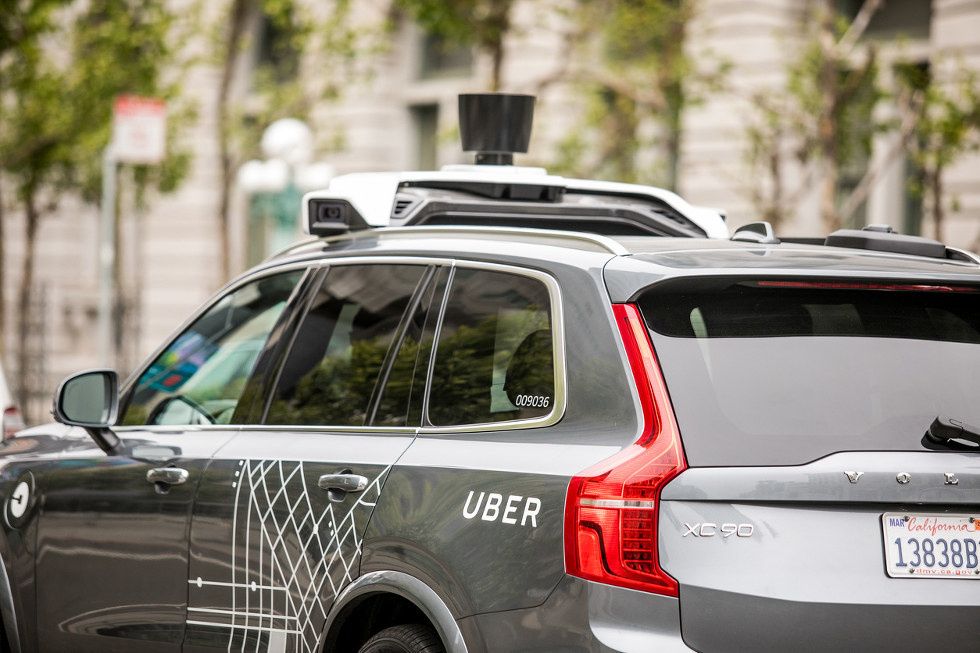Arizona suspends Uber autonomous vehicle tests after fatal crash
Arizona has ordered Uber to suspend autonomous vehicle testing across the state, as rivals Waymo and Intel queue up to say how their driverless technology would have better handled the incident which saw an Uber car kill a pedestrian earlier this month.
Elaine Herzberg was struck by a Volvo XC90 autonomous test car operated by Uber as she crossed the road while pushing a bicycle on the night of March 18 in Tempe, Arizona. The 49-year-old was not walking on a pedestrian crossing at the time of the collision, but footage released by police after the incident has raised serious questions about why the car, which is designed to use radar and lidar to detect objects regardless of ambient light, failed to react.
Read More:
- Lidar, radar and cameras: This is the tech used by autonomous Ubers to see the world around them
- Uber halts autonomous car testing after pedestrian is killed in Arizona
- Video shows the moment self-driving Uber hits pedestrian
On March 26, Arizona governor Douglas Ducey told Uber in a letter addressed to its CEO Dara Khosrowshahi that it must suspend autonomous vehicle testing in the state.
Ducey said: "Improving public safety has always been the emphasis of Arizona's approach to autonomous vehicle testing, and my expectation is that public safety is also the top priority for all who operate this technology in the state of Arizona. The incident that took place on March 18 is an unquestionable failure to comply with this expectation."
Uber has already announced a temporary halt to all of its autonomous vehicle testing in the US and Canada.
NEW: In light of the fatal Uber crash in Tempe, Governor Ducey sends this letter to Uber ordering the company to suspend its testing of autonomous vehicles in Arizona indefinitely #12Newspic.twitter.com/gO5BZB9P2e
— Bianca Buono (@BiancaBuono) March 27, 2018
In the days after the collision, both Waymo and Intel have come forward to explain how their autonomous systems would have reacted in the same situation. First the boss of Waymo - owned by Google parent Alphabet - said he had "a lot of confidence" that his company's technology would have handled the situation safely.
John Krafcik, chief executive of Waymo, was speaking at the annual gathering of the National Automobile Dealers Association in Las Vegas. He said: "All that we can say is based on our knowledge of what we've seen so far...and our own knowledge of the robustness that we've designed into our systems...in situations like that one - in this case a pedestrian or a pedestrian with a bicycle - we have a lot of confidence that our technology would be robust and would be able to handle situations like that one."
Dashboard camera footage released by police shows how Herzberg enters the frame two seconds before the collision, yet the vehicle shows no obvious signs of slowing down or attempting to avoid her. Footage also shows how the safety driver sat behind the wheel was looking down and away from the road in the moments before the accident.
On March 26, Amnon Shashua, chief executive of Mobileye, a computer vision company which specializes in autonomous vehicle technology and was bought by Intel for $15.3bn in 2017, said his system would have spotted Herzberg before impact.
In a blog post on Intel's website, Shashua said Mobileye has fed the dashboard camera footage into its computer system - a system used by millions of commercially available vehicles already on the road. A video of a monitor showing the footage was used, meaning the image quality is likely lower than what would have seen by the car first-hand.
Regardless, Shashua said: "Despite the suboptimal conditions, where much of the high dynamic range data that would be present in the actual scene was likely lost, clear detection was achieved approximately one second before impact."
In a lightly veiled dig at Uber and its relative inexperience in autonomous car development (it started testing driverless systems in 2015, six years after Waymo), Shashua said: "Experience counts, particularly in safety-critical areas...I firmly believe the time to have a meaningful discussion on a safety validation framework for fully autonomous vehicles is now."
According to documents and publicity videos produced by Uber itself, its fleet of modified Volvo SUV use cameras as well as radar and lidar systems to scan the road ahead for vehicles and pedestrians. The narrator of the video, above, explains how the cars are fitted with a "forward facing camera array [which is used to] focus both close and far field, watching for braking vehicles, crossing pedestrians, traffic lights, and signage."
It has also been claimed this week that the Uber-owned Volvo had had its automatic emergency braking (AEB) system disabled. AEB is fitted as standard to all new Volvo cars and would have applied the brakes heavily in an incident like the one in Arizona. However, the system was not active on this particular car.
Speaking to Automotive News Europe, Aptiv spokesperson Zach Peterson said: "We don't want people to be confused or think it was a failure of the technology that we supply for Volvo, because that's not the case".
It is likely that Uber has had to disable AEM and a wide range of systems in its Volvos to stop them interfering with its own autonomous technologies. This shouldn't come as a surprise, but is an interesting point nonetheless.
